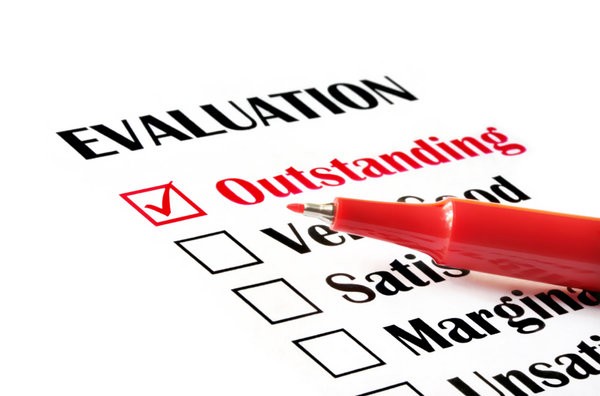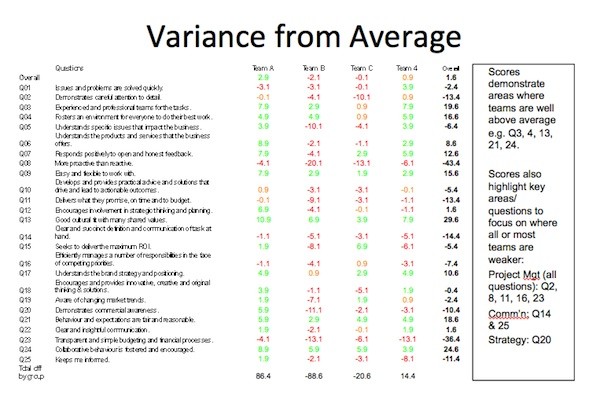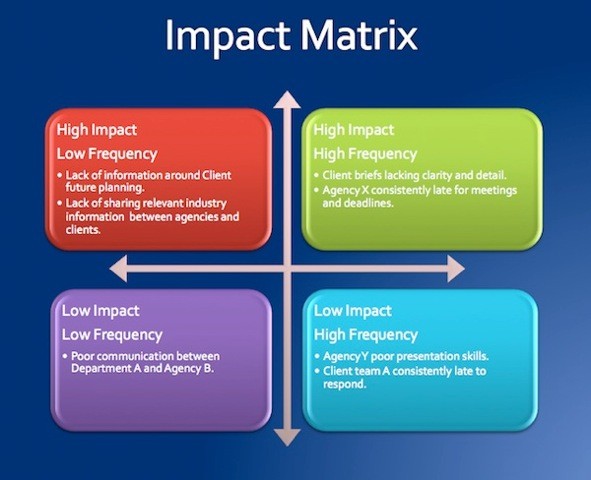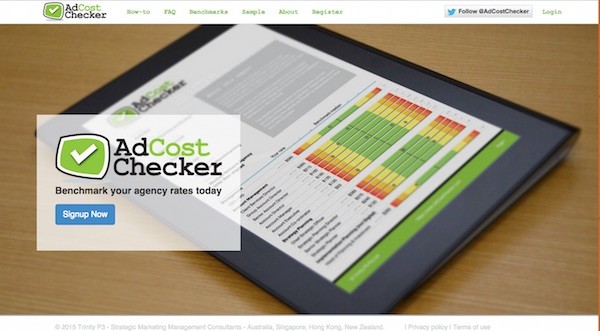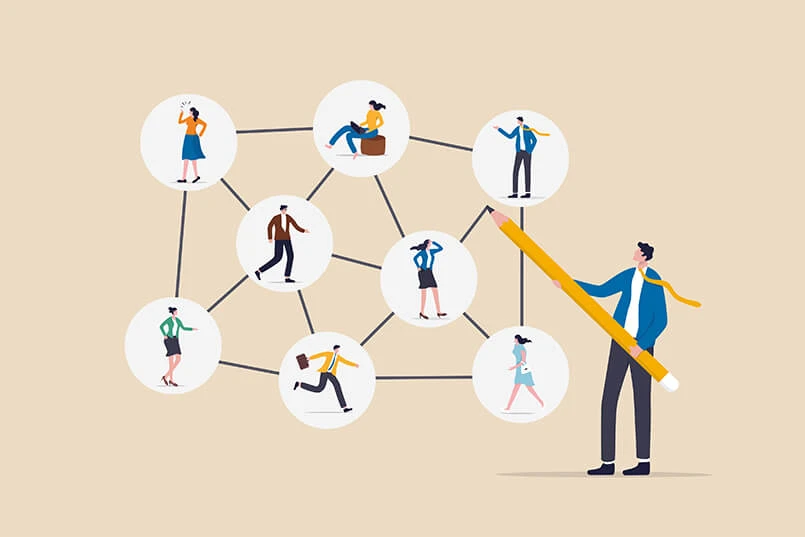TrinityP3’s Evalu8ing tool for client agency relationship assessments is invaluable whether your relationship is on the rocks or steaming ahead at a rate of knots.
Like any relationship, one between a client and any one of their agency partners needs work. Commitment, open communication and ongoing collaboration are just some of the fundamentals that can go astray when workload increases and deadlines loom.
Regardless of how strong a relationship is, a third party tool such as TrinityP3’s Evalu8ing invites everyone to take the time to engage in conversation around the health of a relationship in a way that is positive and productive and leads to stronger partnerships moving forward.
There have been numerous posts written by Darren Woolley and others talking about how Evalu8ing works, its unique approach and how it is different from other appraisal tools that don’t place as much emphasis on collaboration across disciplines and between all parties.
What this particular post focuses on, is why Evalu8ing works for agencies, providing feedback and direction that can result in improved relationships between client and agency teams, better processes, more effective team management and greater communication, collaboration and efficiency of the agency as a whole.
So here are 3 insights into how agencies have used Evalu8ing recently, to benefit not only their client relationships but their own people, processes and performance.
Insight 1: You can go from 0 to hero in 6 months
This is the story of one agency, new to a client relationship, whose performance in Round 1 of Evalu8ing was 15 points lower than the other two agencies in the relationship. In Evalu8ing terms, 15 points is a considerable margin especially when that score is also over 10 points below the overall average of the questionnaire.
Issues impacting the low score included team resourcing, slow responsiveness, lack of urgency and a general sense of lack of enthusiasm. It was not a pretty picture.
Standing in the workshop discussing these results, I appreciated it could have gone one of two ways. The agency could have become increasingly defensive, dejected or just distanced from the process.
Or, and this is what did happen, they could take it on the chin, work through the action points with the team and go away in a dignified professional manner to sort out what went wrong. And then fix it.
And fix it they did. Round 2 presented a very different story indeed…
Heroes in Round 2
On receiving the Round 2 results, the scores were worthy of a double take. Not only had the new agency redeemed itself and scored a massive 14 points higher than Round 1, they had improved on all areas of performance.
So how had Evalu8ing influenced this reversal of fortunes?
The agency used Evalu8ing in exactly the right way. Rather than being disappointed and starting a blame game as to why they hadn’t delivered in Round 1 they merely took it on as a challenge.
The main areas of dysfunction seemed to stem from a few factors largely to do with the timing of when they were appointed:
a) They were new to the business and had entered the relationship at an exceptionally busy time before a major campaign launch
b) They had a fantastic group leader but perhaps hadn’t quite nailed the team under that person
c) Senior Management won the business then didn’t transition the relationship from them to the day to day team
d) With a major launch scheduled and moving at speed, the under-resourced, under-briefed team were at times inaccurate, slow and lacking the urgency required in such a situation.
Using this feedback the agency, amongst other things, restructured the team, got Senior Management involved, implemented some clever proactive information sharing and involved themselves with the other agencies forging partnerships with them and the client simultaneously.
And what a difference the mood and tone of Round 2 took.
14 points higher they have now set themselves a target to go even further in Round 3. Undoubtedly they will do it or at least come very close.
Insight 2: What doesn’t kill you makes you stronger
Evalu8ing only rarely kills a relationship and even then, it has never been the instigator but rather the final straw that makes a client realise a relationship is beyond repair.
So if it doesn’t kill you, it stands to reason it can make you stronger, if you choose to use it correctly. Fight it and chances are you will write your own death sentence.
Use of the qualitative and quantitative output from Evalu8ing allows teams to plot areas of strength and weakness but also to highlight opportunities in a way that helps prioritise actions.
Using our variance tables we can review how all teams have performed versus the previous round and also how each team has performed on each question versus the average.
From these we can see where teams are performing above average but also where the issues lie. Referring to the above example, we can extract the questions where all teams are performing poorly versus the average as the basis for discussion in the workshop.
From the table above it is clear that Process Management is a key area of weakness for the team as a whole so the workshop that followed this report focused mainly on Process and how these issues could be resolved.
To prioritise actions to be taken, we can create a simple graph and plot the issues based on the IMPACT they have on the relationship and the FREQUENCY they occur.
So areas that have low impact and low frequency we may choose to park… if all parties are happy to live with them. These are the “niggles” that all relationships have – the towel on the bed, the shoes at the bottom of the stairs, the pile of clothes on the chair next to the wardrobe!
Our efforts may be better spent addressing the areas of high impact and high frequency (Priority 1, the ‘deal breakers’) high impact and low frequency (Priority 2, the ‘deal shakers’) and even those of low impact but high frequency (‘the irritators’) as these are the annoying actions that often happen every day and can place undue stress on a relationship for very little reason.
Speaking to the agencies a few weeks after the session they were exceptionally positive about the findings as it had forced a review of processes not just on this client’s business but in a broader business sense.
Months later when asked if it had made a difference, the agencies said the overhaul had resulted in greater productivity, cost efficiencies across all clients and increased satisfaction across all departments particularly production and creative.
Insight 3: For better or worse
Whilst there is no guarantee of a happy marriage forever, there is greater likelihood of going the distance with open and honest conversation, regular face to face contact and a grown up approach to sticky issues like finance, education and conflict. I’m not a marriage counselor or a psychologist but I know enough to realize this is true of all relationships, business ones being no exception.
In this way, Evalu8ing acts like a business relationship counseling tool. Held every six months, the rounds of Evalu8ing force teams to take time out to consider all aspects of their relationship from a multi-discipline perspective.
And the workshop that follows the questionnaire analysis helps channel all those considerations to focus the teams, allow open discussion and give all teams the opportunity to give the relationship the best chance, not only of surviving but succeeding.
Evalu8ing for Agencies
So while this post may not encourage Agencies to proactively commission Evalu8ing across all their clients (of course if it does I will be one popular consultant!), hopefully it reassures Agencies that tools such as Evalu8ing are there to build, strengthen and reinforce relationships so they last longer, if not forever.
What are your experiences with relationship evaluation systems? Please leave a comment to share.

